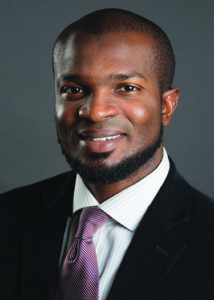February 4, 2025
Heart health among nursing home residents: The role of telemedicine in bridging care gaps
By: Ifedolapo Sulyman Olanrewaju, MD, MHI, SFHM, CPE
Post-Acute Telemedicine Regional Medical Director

Heart health is an overarching concern among senior citizens but especially among nursing home residents who often carry a higher burden of comorbidities, including cardiovascular disease.
Given that cardiovascular disease is the leading cause of mortality in older adults, it’s only fitting that during American Heart Month this February, we spend some time reflecting on the role of telemedicine in the national armamentarium for addressing care gaps for our older adults in nursing homes.
Maintaining optimal heart health for this vulnerable population requires a proactive, comprehensive, and agile approach, which is where Sound Physicians’ post-acute telemedicine can support the efforts of our nursing home partners.
The unique heart health needs of nursing home residents
Nursing home residents often have multiple chronic conditions that complicate cardiovascular care, including hypertension, diabetes, stroke, and dementia. This state of multimorbidity coupled with polypharmacy common among nursing home residents increases their risk for cardiovascular disease and overall morbidity from greater likelihood of falling, increased rate of muscle loss, decreased physical activity and frailty. This perpetuates a vicious cycle that translates to accelerated aging and increased cardiovascular mortality.
The complexity of addressing the holistic heart health needs of this increasingly vulnerable population lends itself to a collaborative care model that involves multiple stakeholders, from cardiologists and geriatricians to primary nursing home clinicians — including their proxies such as post-acute care telemedicine clinicians.
Opportunities in nursing home resident heart health management
Annual wellness visits provide a high-value care opportunity to proactively identify risk factors and help set health goals, but they fall short in providing ongoing cardiovascular care.
The limited access to specialized care with inconsistent follow-ups as well as sparse clinician presence, especially after-hours, also negatively impacts cardiovascular outcomes among this population, highlighting the need for approaches such as telemedicine, which help fill unmet clinical needs.
Telemedicine offers support for the traditional care model for nursing home residents and provides additional resources to intervene sooner rather than later.
How telemedicine can bridge the gap
Telemedicine offers an innovative solution to address the unmet cardiovascular needs of nursing home residents. By leveraging technology, telemedicine clinicians can provide timely, consistent, and personalized care that complements and enhances annual wellness visits as well as the traditional nursing home care model. Following are three distinct ways that Sound’s post-acute care telemedicine can support your traditional nursing home care model and deliver improved cardiovascular outcomes for your patients.
Enhanced medication management
Our team of post-acute telemedicine clinicians can help appraise the accuracy of the medication reconciliation list when the patient is admitted as well as identify risks inherent in polypharmacy that can negatively impact cardiovascular health outcomes.
Proactive multimorbidity appraisal
Our telemedicine clinicians support your on–site teams in early recognition of multimorbidity and intervene through therapeutic recommendations at tuck-in visits. We also help reduce risk and set up your nursing home residents for success by addressing issues such as uncontrolled hypertension and hyperglycemia at the time of admission.
Improved emergency response
Our telemedicine clinical team also provides ongoing support to your nursing home staff to manage acute cardiovascular events, virtually triaging them with a higher degree of precision than traditional cross coverage and intervening to resolve many issues on site and avoiding unnecessary emergency department transfers. This facility-based care mirrors home-based care, which is associated with faster recovery and decreased risk for geriatric syndromes such as delirium. When an emergency department transfer is indicated, the decision is also swift, and nursing colleagues feel supported to initiate life-saving measures with telemedicine clinician guidance pending formal execution of the transfer.
A powerful tool to bridge the gap for patients
Managing the heart health of nursing home residents requires an ongoing proactive and multidisciplinary approach. Post-acute telemedicine offers a powerful tool to bridge existing gaps in care, providing continuous support and after-hours access to clinicians who can offer treatment tailored to the unique needs of this vulnerable population while reducing the burden on caregivers and healthcare systems.
